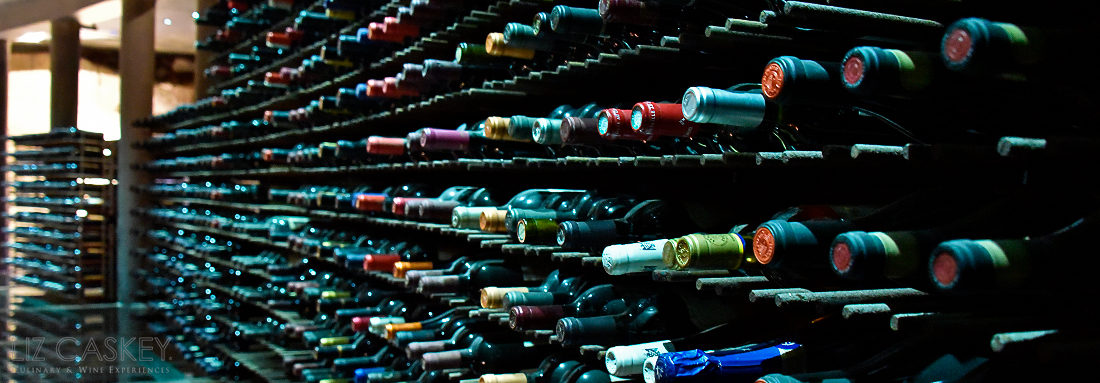
Perusing the international online newspapers yesterday, I found this intriguing (back) article from the Financial Times by Andrew Jefford on a topic close to my heart—and neck of the woods: Argentinean Malbec. I was particularly excited to read about them highlighting some of our favorite producers in Mendoza like Fabre Montmayou, Alta Vista, and Enrique Foster. These are all great examples of expert winemakers in the Malbec material with balanced wines with character (perhaps they only forgot to mentioned Montmayou’s legendary, Le Gran Vin, one of Argentina’s Malbec “references”). We also would add to the list Angel Mendoza, winemaker and “evangelist” of terroir in Eastern Mendoza, Lunlunta. His Pura Sangre puts Malbec in a specific place and makes you wonder why Appellations and a regimented DOC have not caught on in South America (yet)!! It is worth scouring out these gems. They have personality; they have something to say; they are well made and balanced; and as Jefford mentions, they suffered a “sea” change from their Northern cousins—but in that they came into their own—and I will take them that way!! Please read on!
Old grapes find the New World
By Andrew Jefford
Published: August 19 2006 03:00 | Last updated: August 19 2006 03:00
For some grape varieties, the equator is a mirror. Their southern-hemisphere persona reflects the northern original, albeit with a few tweaks in volume and pungency. Cabernet Sauvignon, Chardonnay, Muscat and Sauvignon Blanc are all, once installed under the southern cross, plainly recognisable from their passport photographs.
For other grape varieties, by contrast, the equator is a prism. The south does something different to them; they suffer a sea-change and almost always into something richer and stranger than their northern selves. Australian Shiraz is mostly unrecognisable when compared to the lean beast that prowls the hill of Hermitage; Sémillon and Chenin Blanc, too, sprout new personalities under a southern sun. And as for Argentine Malbec . . .
Back in France this grape is a kind of odd-job red, popping up in regions as disparate as Cabardès, Bordeaux and Anjou and assuming a wide variety of aliases (such as Auxerrois and Côt). Only on the gravel terraces of Cahors does it achieve greatness: dark, inky wines with a rugged chin line and a markedly ferrous note, as if each bottle contained a teaspoon of iron filings. Elsewhere, it’s a grouchy stiffener.
It was imported to Argentina in the mid-19th century and flourished in the desert oasis of Mendoza, the source of 70 per cent of the country’s wine (and 90 per cent of its wine exports). Familiarity bred contempt: 30,000 hectares of old-vine Malbec were torn up in the 1960s and 1970s, when Cabernet was thought to be the coming red. Cabernet does indeed perform well here and the two varieties blend happily, yet few doubt now that Mendoza Malbec is that most precious of national viticultural assets: a world original.
Its quality potential is impressive. Might it one day produce the most complex and food-friendly red wines in the southern hemisphere? There’s a chance. The best combine a soaring fruit line with a distinctively perfumed, violet note. The fact that they are high-grown (many of Mendoza’s vineyards would, if resited in Wales, top Snowdon) means cool nights, lending their plum fruit a vivacious acid balance. They may find it hard to match the sweet, glossy seduction of Chile’s top reds but in terms of extractive interest – an earthy, textured bass to balance out the melodic fruit line – the finest have few southern-hemisphere peers. With food, it is those earthy, chewy flavours that tend to lend ambitious red wines their dignity and grandeur.
Not all southern-hemisphere Malbecs are successful; weaker Argentinian examples rely too much on dry oak tannin rather than sweet grape tannin and the variety’s high-yielding contentment under the Andean snows mean that some wines are hollow or lack those precious bass notes. Almost none have the mineral-metallic note of Cahors. And their pricing is amusingly inconsistent. In the blind tasting I organised for this article (joined by non-professional tasters), one of the most universally liked wines cost just £5.95 and the two top wines were both under £10, whereas the tasting included a number of wines at more than £15. (It should be noted that some of the most ambitious Argentine Malbecs are not yet available in the UK, including Michel Rolland’s Val de Flores and Californian consultant Paul Hobbs’ Cobos.)
The two producers who seem to have succeeded best with the variety share a Bordeaux background. Hervé Joyaux at Fabre-Montmayou was a former négociant for Ginestet, a man who was “seduced” by Mendoza Malbec into emigrating; he set about buying up old-vine parcels at a time when most were grubbing them up. The 2003 Fabre-Montmayou Malbec (Wine Society, tel: +44 (0)1438-740 222, £5.95) is unshowy but profoundly satisfying; I can’t think of a better sub-£6 red than this beautifully bustling, beefy red with its brilliantly judged drinking balance, soft yet textured, its plum fruits gently modulating towards clean, liquorice-edged finish. To find a wine whose fruit is drawn from vines of more than 50 years old at this price is remarkable. The Fabre-Montmayou 2003 Gran Reserva Malbec (Wine Society, £7.95) is also shatteringly good value. It’s a darker, leggier, more perfumed wine that shows some of that delicious yet elusive violet character on both nose and palate. There is more oak but it’s seamlessly integrated and the tannic mass is splendid: ample yet soft and dimpled. The balance, purity and polish of this wine is world-class. Fabre Montmayou’s main importer, Vinothentic (tel: +44 (0)20-7354 1994), has another Malbec cuvée at £8, from the 2004 vintage this time, which is dark, scented and brooding; it will evolve splendidly for a year or two.
Almost as good are the wines of Alta Vista, the winery originally established by Pomerol proprietor Jean-Michel Arcaute of Château Clinet and taken over after his premature death by the d’Aulan family. The 2003 Alta Vista Premium Malbec (Lay & Wheeler, tel: +44 (0)1473-313 233, £7.45) has a more aggressive style than Fabre Montmayou’s pair but is a wine of remarkable dissolved energy. It’s well worth making the step up, though, to the 2004 Alta Vista Grande Reserve Malbec Terroir Selection (Lay & Wheeler, £9.95): aromatically this is a more intriguing wine, its scents a typical combination of plums and moist coal; the palate brings blackcurrant and blackberry into the equation, backing them with suavely ample tannins. Again, the wine has enviable balance, weight and poise.
If you want to see the violet character of Malbec at its most exuberant, try the young-vine 2005 Ique from Enrique Foster (Private Cellar, tel: +44 (0)1353-721 999, £7.76): enticingly aromatic, this is like a kind of supercharged southern hemisphere Crozes-Hermitage. The 2003 Ruca Malen Malbec (Corney & Barrow, tel: +44 (0)20-7265 2400, £8.99) needs decanting but is dense, vigorous and complete. Weinert’s 2000 Malbec (Sainsbury’s, tel: +44 (0)800-636 262, £7.49) is savoury and moreish.
Argentina’s leading producer, Trapiche, is taking Malbec laudably seriously and has produced three ambitious single-vineyard selections (www.longfordwines.co.uk, 2004 vintage from November, £18.99). All need less oak and denser, riper tannins but the intensity of their fruit is remarkable; my favourite is the 2004 Viña Carlos Gei Berra from Lunlunta, the most amply built of the three. The influential Nicolas Catena is also moving towards the creation of great Malbec and his company has carried out an ambitious clonal research programme. The 2003 Catena Alta Malbec (Bibendum, tel: +44 (0)20-7722 5577, £25.76), a blend of the company’s top Malbec vineyards, is shapely and vivacious but with an over-assertive curranty streak to the finish. It’s good wine – but vastly over-priced by comparison with the wines of Fabre-Montmayou and Alta Vista.












